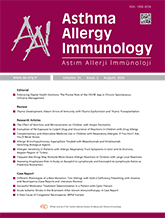


Venom immunotherapy (VIT) is one of the most effective treatment methods for allergic diseases. Neurological symptoms are infrequent among systemic reactions. In this case report, the clinical and radiological features of a patient who developed acute brainstem ischemia two hours after a VIT up-dosing phase were evaluated. A 48-year-old male patient developed dyspnea, angioedema, and syncope after a honeybee sting and was diagnosed with anaphylaxis. VIT was started with the conventional schedule (depot extract). The patient went to the emergency department due to numbness in his right arm and impaired speech two hours after VIT was started during an up-dosing phase. In the neurological examination, the patient was conscious and fully cooperative. The pupillary light response, eye movements, and visual field were normal. The right nasolabial groove was faint and consistent with central facial paralysis. Brain diffusion-weight magnetic resonance imaging (MRI) detected diffusion restriction consistent with acute lacunar infarct in the pons. The patient was started on clopidogrel (75 mg/day), atorvastatin (10 mg/day), and levetiracetam (1000 mg/day) treatment. When re-evaluated 30 days later, his muscle strength deficit and speech had improved. VIT is a life-saving treatment option applied in cases of anaphylaxis as a result of bee stings. Although systemic reactions are sometimes observed during the applications, it is rare to see neurological symptoms after VIT. In patients undergoing VIT, one should be vigilant regarding ischemia development, especially during an up-dosing phase.